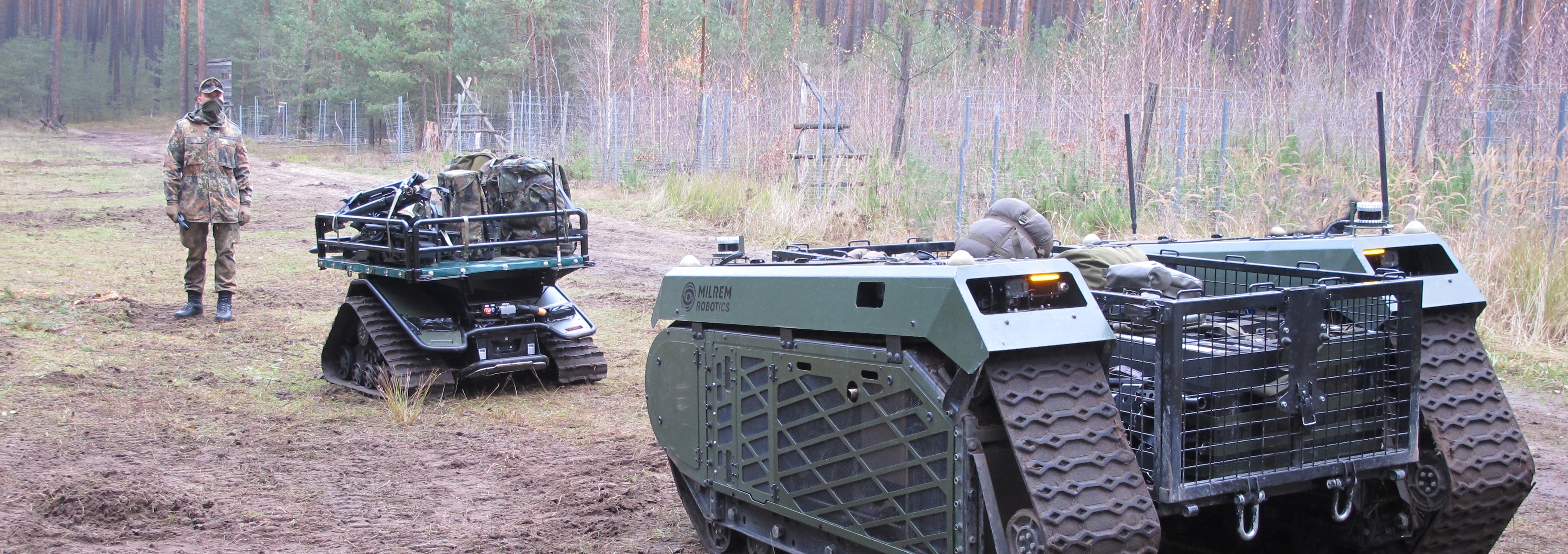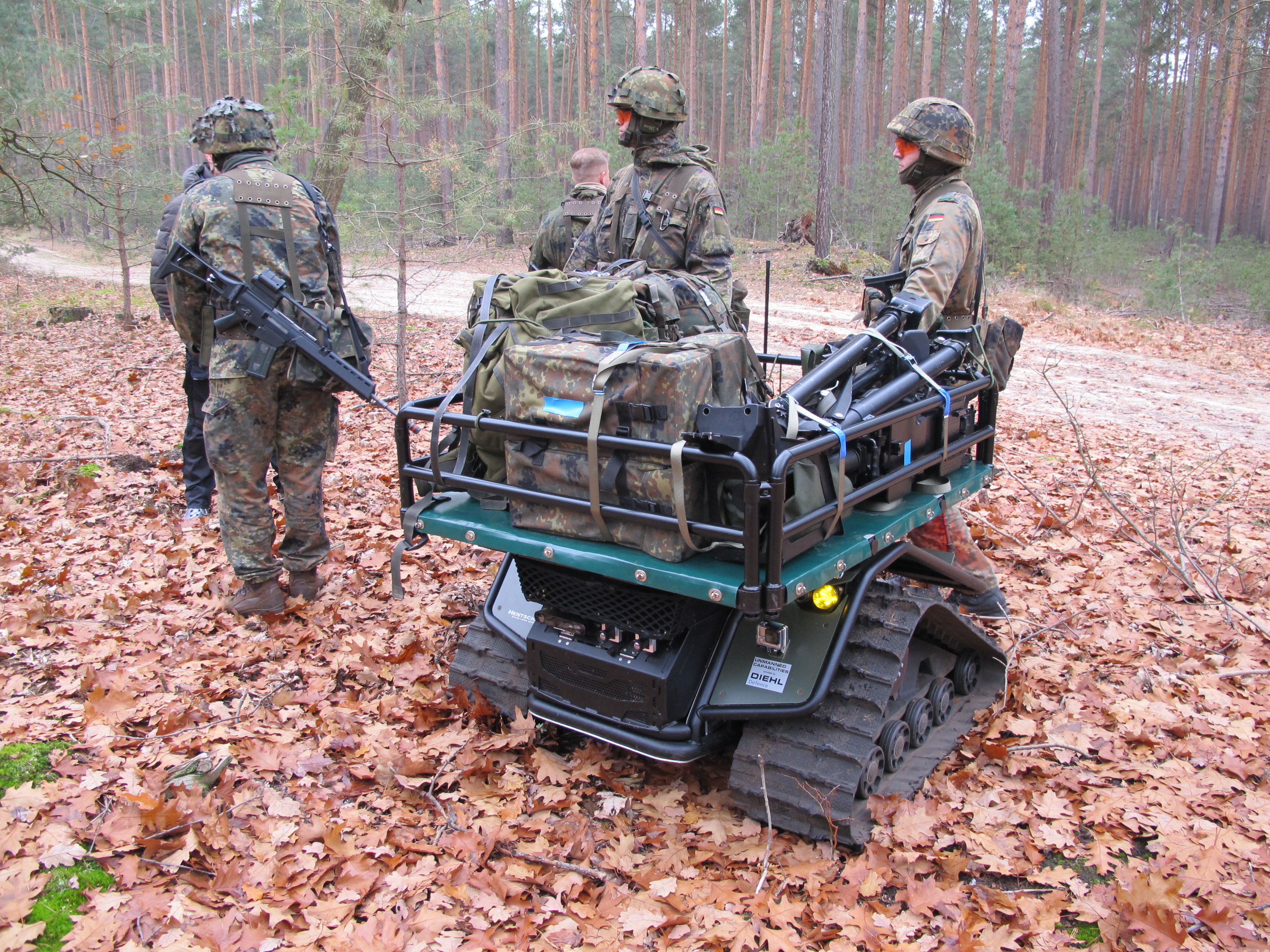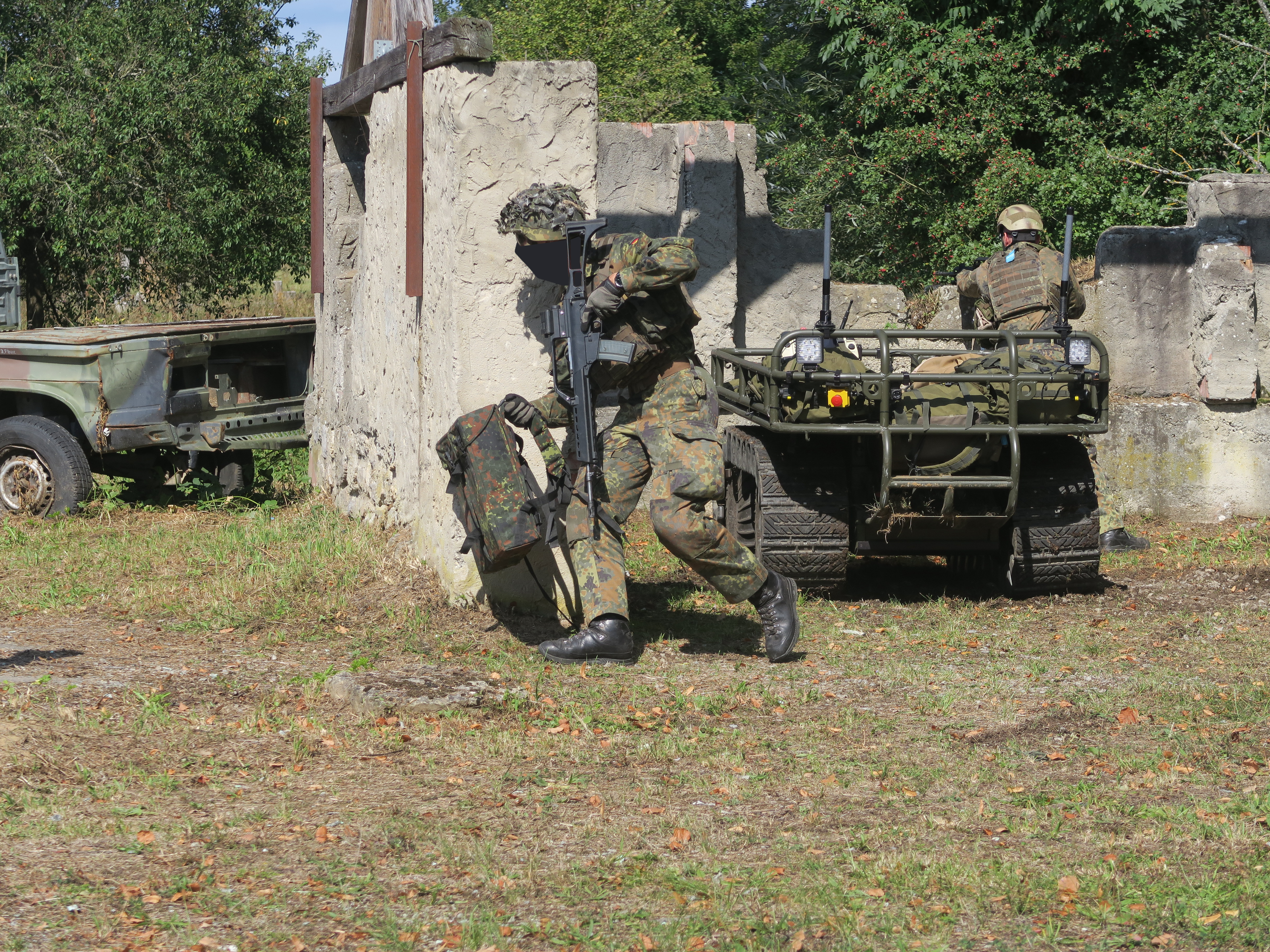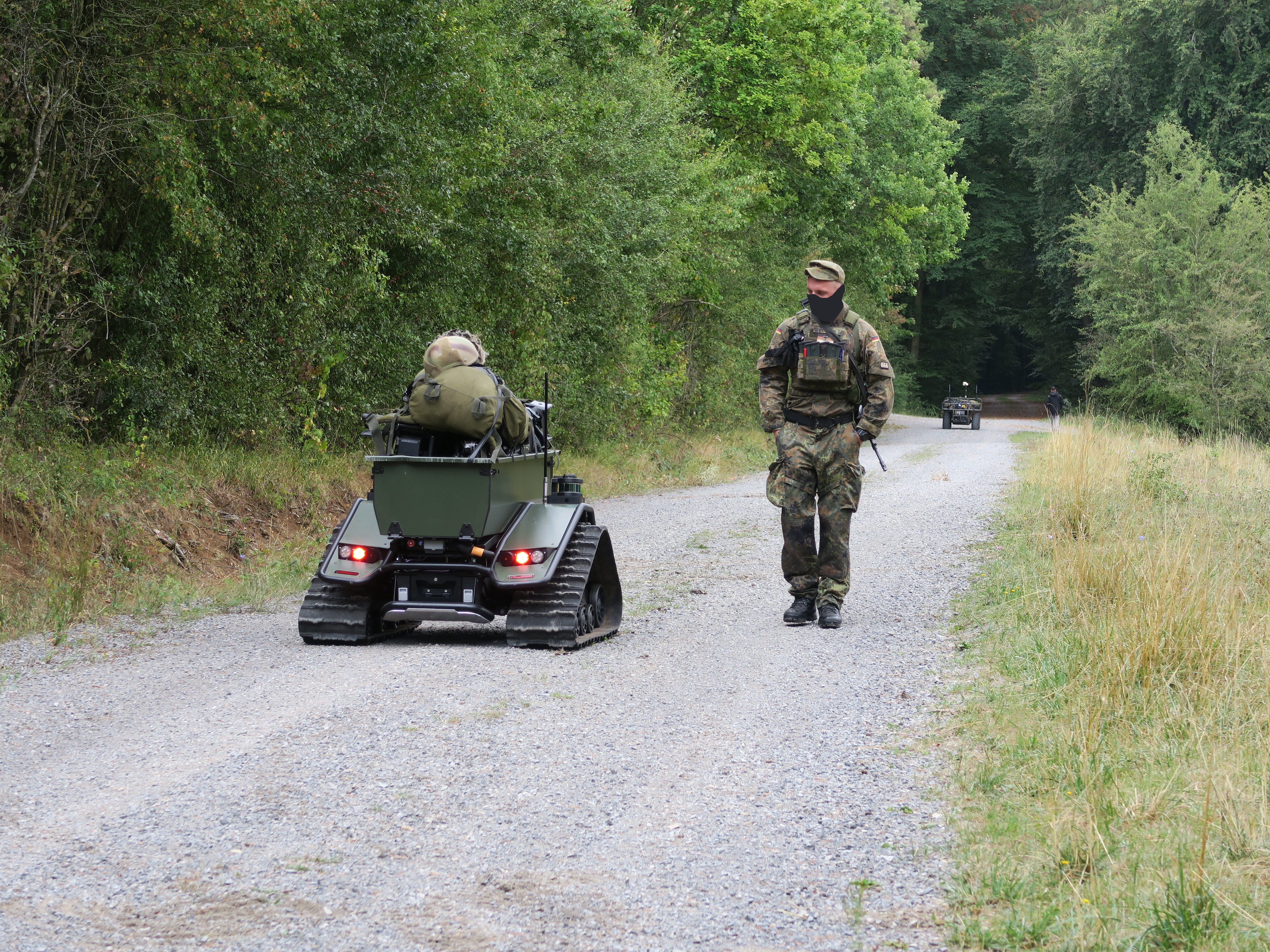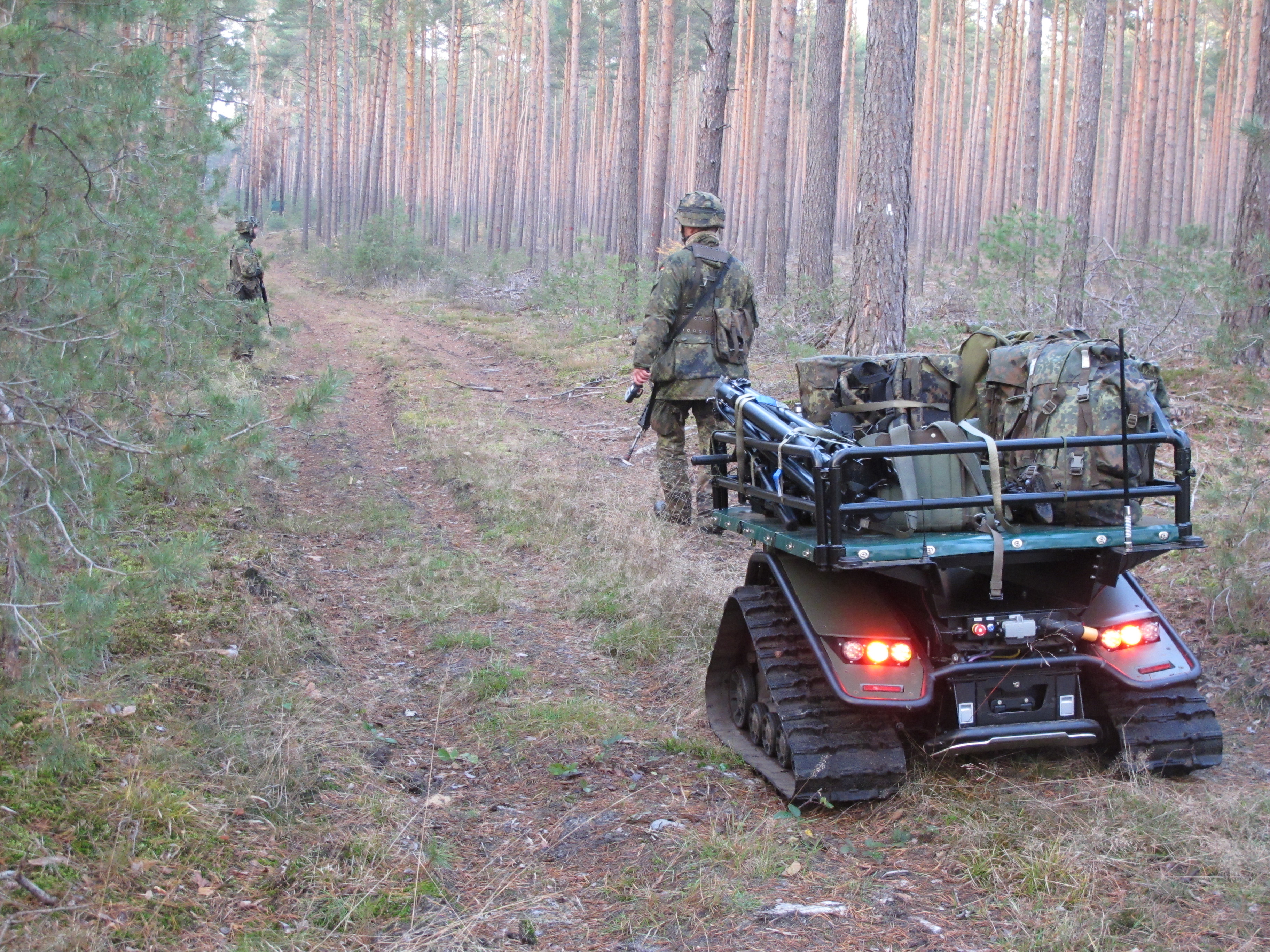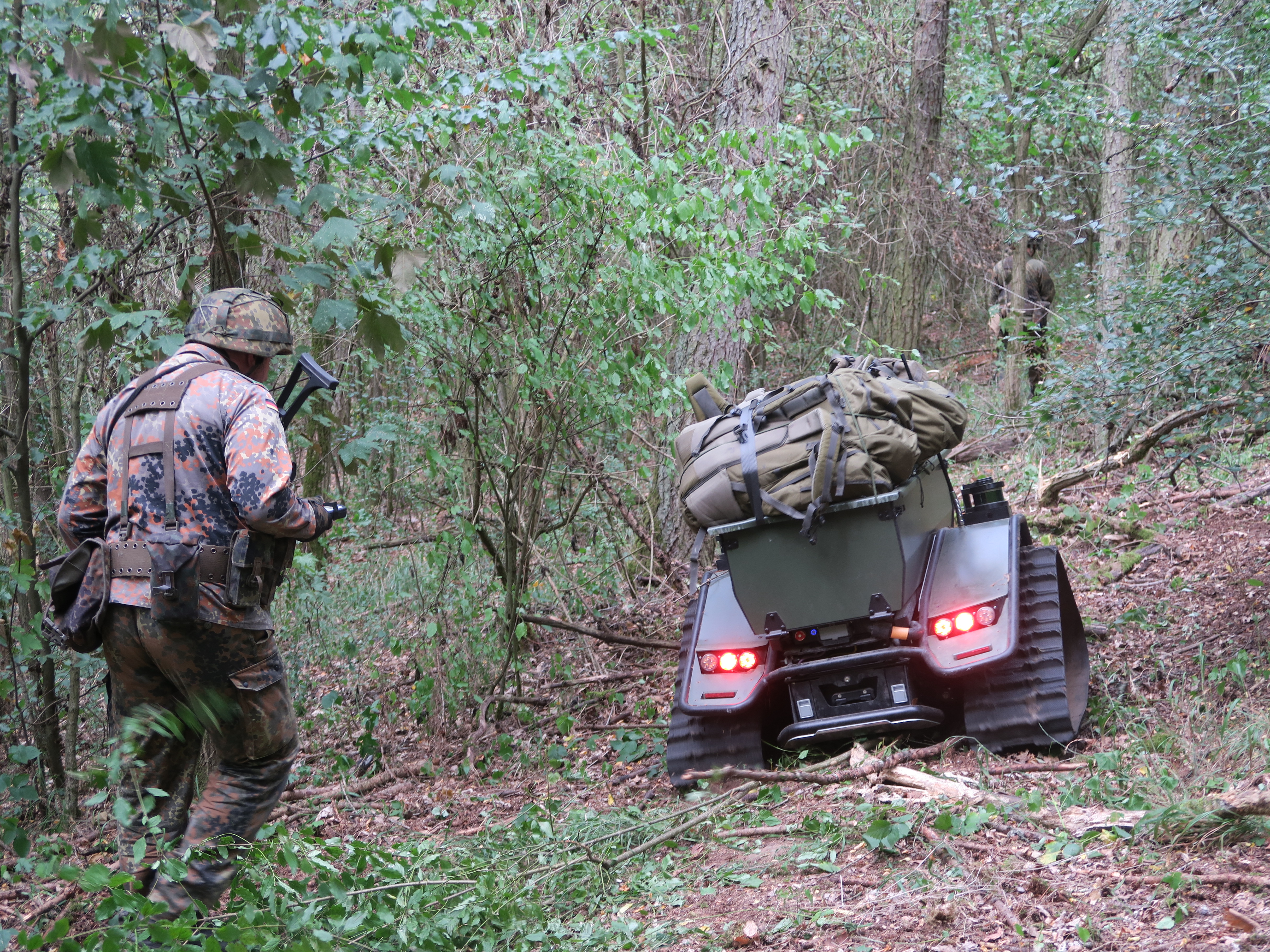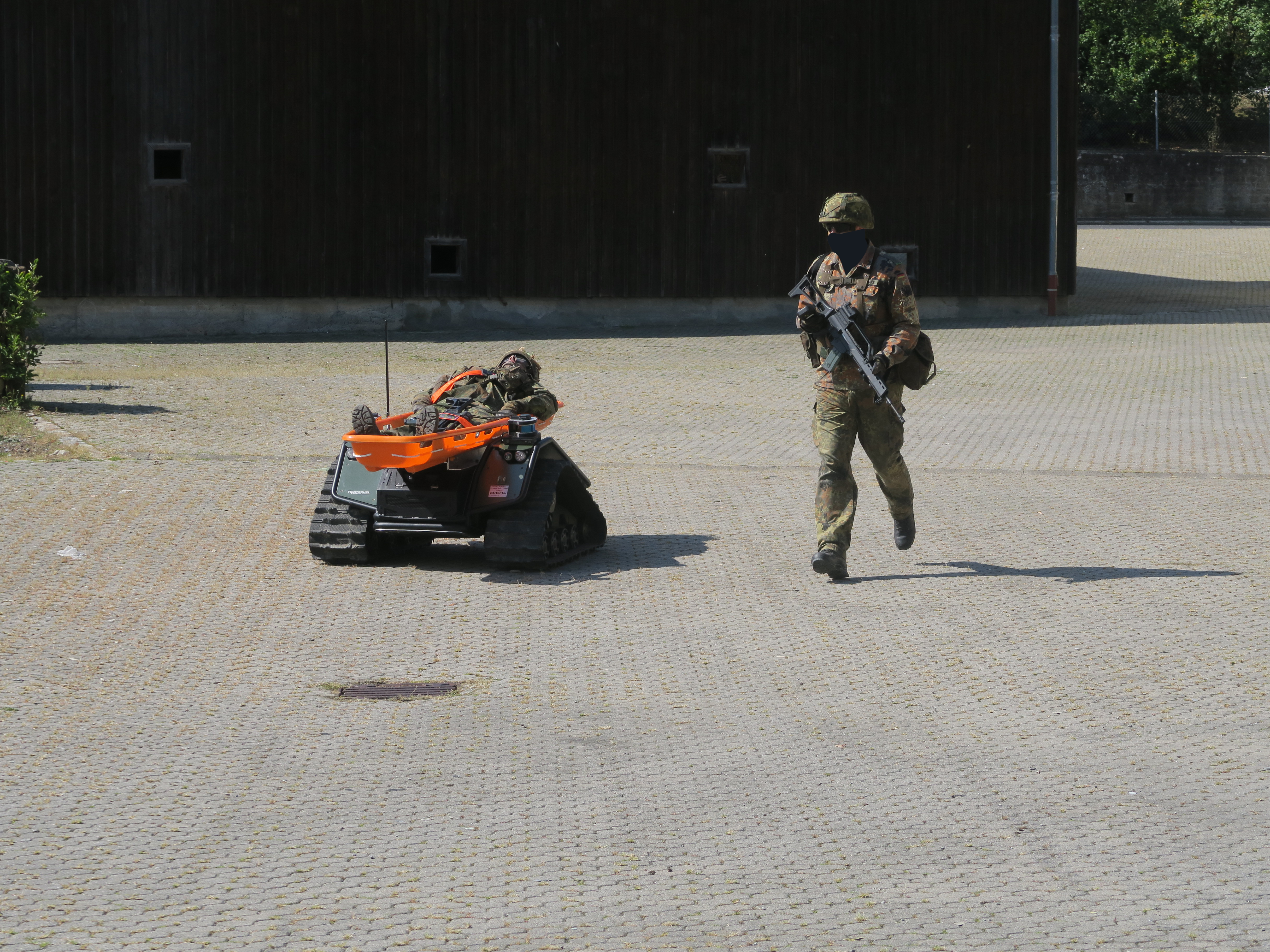Scientifically supported Bundeswehr test series puts transport robots through their paces for the infantry
The Bundeswehr plans to equip its infantry with unmanned ground vehicles for the transport of material and weapons. It has tested various off-the-shelf systems in a variety of operational scenarios as part of two troop exercises. The Fraunhofer FKIE provided technical and scientific support for the tests. The results demonstrate the high potential of unmanned ground vehicles (UGVs) and the level of maturity they have already attained. The conclusion among soldiers and experts was unanimous: the systems are ready for procurement.
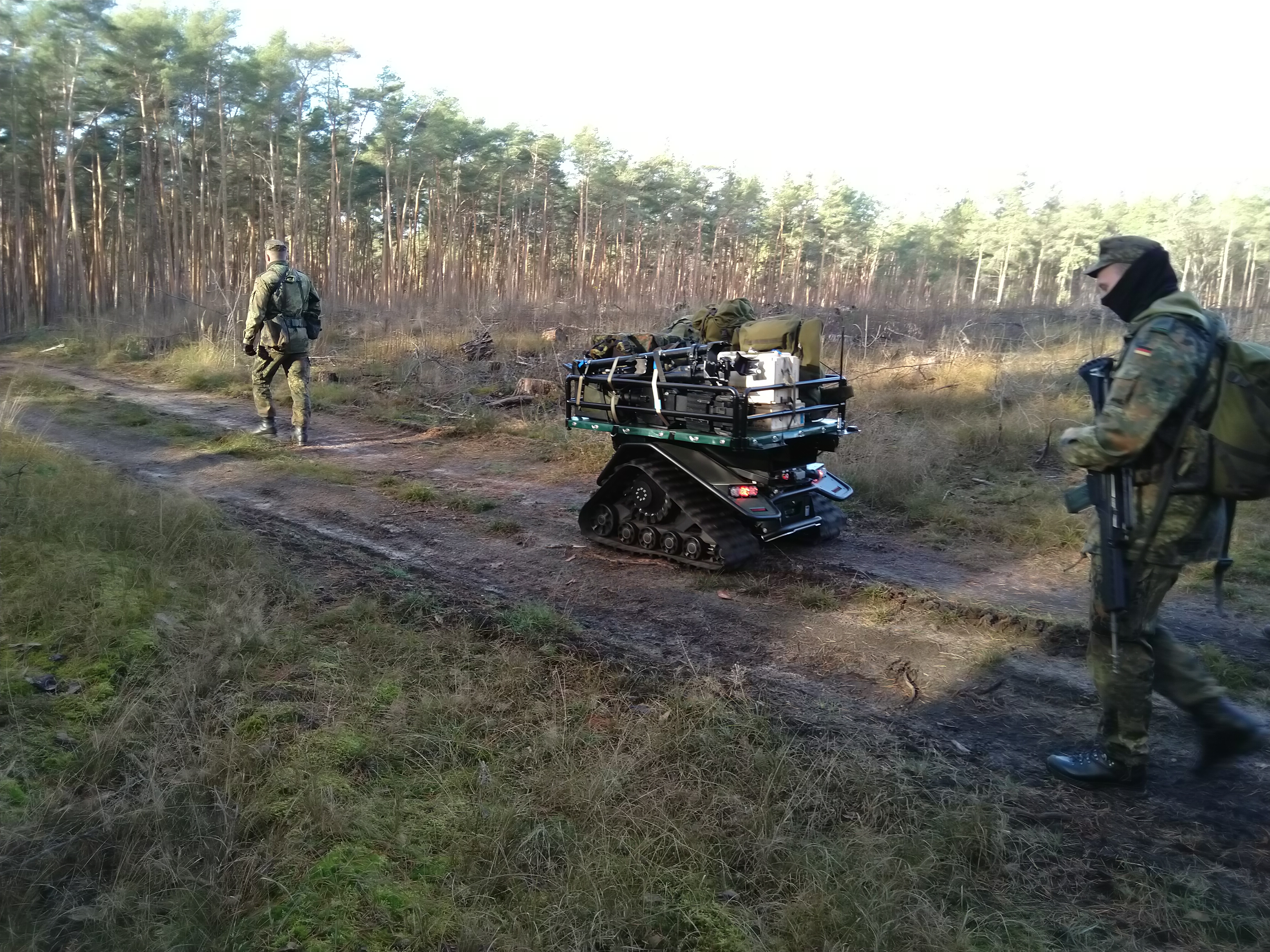
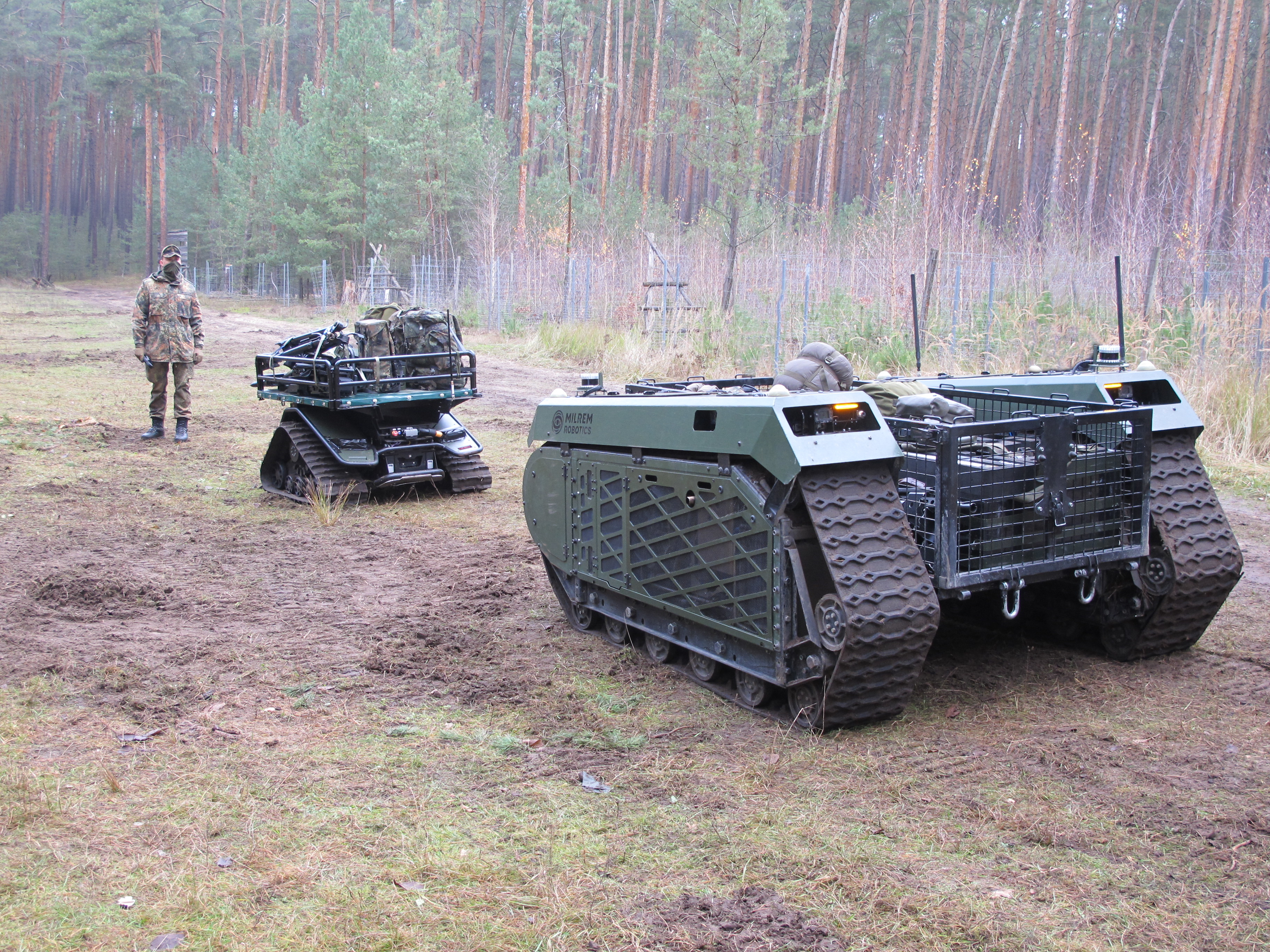
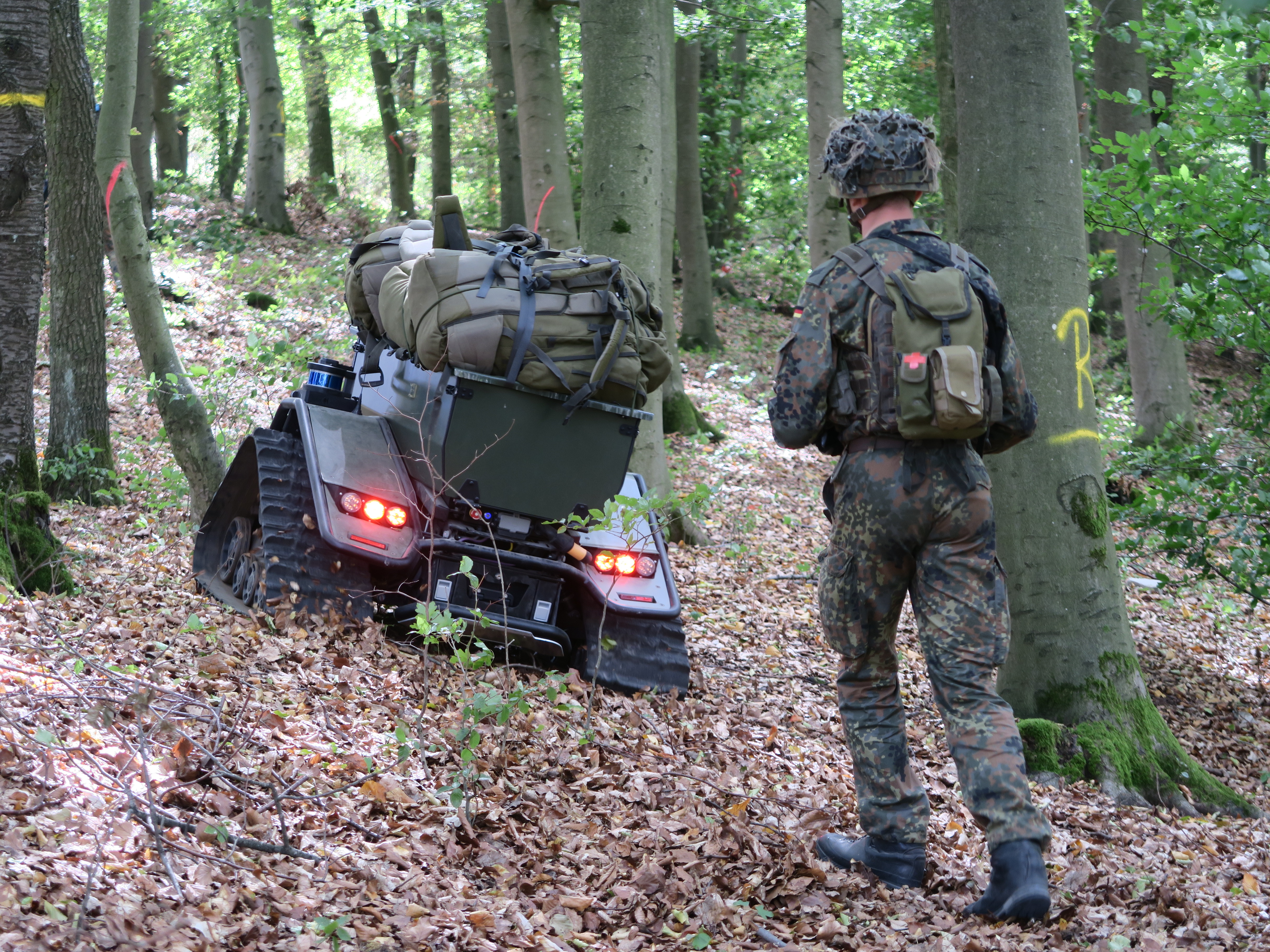
The members of a single three-man squad in a heavy infantry platoon are required to carry some 100 kg of additional weapon system weight to the area of operations in addition to their personal equipment and weapons. As a result, the soldiers' operational range, deployability and endurance are severely constrained. The Bundeswehr is therefore conducting a series of tests to assess the maturity and support potential of four different off-the-shelf UGV models, so-called cargo mules. On behalf of the Bundeswehr Army Concepts and Capabilities Development Centre (Department II 2) in cooperation with the Federal Office of Bundeswehr Equipment, Information Technology and In-Service Support (Department U6.2) and Bundeswehr Technical Center 81, an initial test was conducted at the infantry school in Hammelburg in the fall of 2019. Three remotely controlled systems went head-to-head in operational scenarios in urban environments: the Mission Master (Rheinmetall), the Ziesel (Hentschel/Diehl Defence) and the Probot V2 (Friedrich Hippe/Elbit Systems).
Hands-on testing by intended users
"The fact that the UGVs were controlled by the soldiers themselves, the intended users, rather than by trained operators from the manufacturing companies is what made the tests so valuable for obtaining usable information," says Dr. Frank E. Schneider, deputy head of Cognitive Mobile Systems, the FKIE department commissioned to support the tests. A second test was therefore conducted by the 6th Company of the Bundeswehr Guard Battalion at the Lehnin military training area in Brandenburg in late November 2020. The UGV Ziesel again took part, as did a newcomer to the tests, the THeMIS system made by the Estonian company Milrem Robotics. The test regime included remote-controlled to autonomous following under load. This time, unlike the first test in Hammelburg, the test was conducted in forested terrain.
Intuitive operation and clear support potential
The soldiers quickly familiarized themselves with remote control of the systems and were enthusiastic about the overall level of support the UGVs provided. In addition to the remote-controlled option, both systems have an automated follow function which was also tested. Its main purpose is to free up operators from controlling the transport robot, to enable them to place their primary focus on their own protection during operations. The two systems took much different approaches to the technical implementation of the automatic follow-me mode. The Ziesel uses a front-mounted camera system, while for the THeMIS system Milrem uses a transmitter carried by the soldier which is tracked by the vehicle. The models had other system-dependent advantages and disadvantages that had to be weighed up against each other. The Ziesel, for example, has a lower payload capacity than the THeMIS, although it was found to be adequate overall, and the Ziesel has no a diesel generator. On the other hand, it is more maneuverable and easier to handle.
"The systems are ready enter the procurement process," says robotics expert and project manager Schneider, summing up the results of the test series so far. "In my estimation, all of the suppliers meet the basic requirements specified for procurement. And the fact is that the greatly reduced weight load on the soldiers means that they will arrive at their area of operations much better rested." Thus, the Bundeswehr projects a need for just over 200 UGVs. A corresponding proposal, submitted in 2019, is currently before the planning office. If a functional requirement to this effect can be drawn up by 2022, the first systems could be introduced by 2027.
